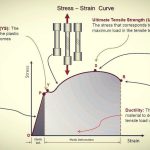Nature has been a master engineer for billions of years, evolving solutions that balance efficiency, adaptability, and resilience. Scientists and engineers have long looked to the natural world for inspiration, leading to innovations that revolutionize technology, design, and mechanics. This practice, known as biomimicry, draws lessons from nature to solve human challenges.
From the flight of birds inspiring airplanes to the efficiency of fish guiding underwater robotics, nature’s designs offer invaluable insights. In this article, we explore mechanical marvels found in nature and how they have shaped modern engineering.
1. What is Biomimicry? 🌍🔬
Biomimicry is the practice of studying and imitating nature’s time-tested strategies to develop new technologies, products, and systems. This approach is used in various fields, including robotics, aerodynamics, architecture, medicine, and materials science.
Key Principles of Biomimicry:
✅ Efficiency: Nature optimizes energy use (e.g., birds’ flight patterns).
✅ Sustainability: Natural processes recycle resources (e.g., ecosystems).
✅ Adaptability: Organisms evolve to survive in changing conditions.
✅ Resilience: Structures in nature are designed to endure stress (e.g., honeycombs).
Let’s explore mechanical wonders in nature and how they inspire modern technology.
2. Nature’s Mechanical Wonders and Their Engineering Applications 🦾🌿
A. Bird Wings & Aviation ✈️
Nature’s Inspiration: Birds, bats, and insects have evolved highly efficient wing structures that allow for controlled flight.
Engineering Application:
- The Wright brothers studied birds’ wing movements, leading to the invention of airplanes.
- Flapping-wing drones (ornithopters) mimic bird and insect flight for efficient aerial robotics.
- Sharklet wing design (used in Airbus aircraft) is based on bird wings to reduce drag and improve fuel efficiency.
🔹 Lesson: Studying bird aerodynamics helps improve aviation and drone technology.
B. Gecko Feet & Climbing Robots 🦎🤖
Nature’s Inspiration: Geckos can climb vertical surfaces and even walk upside down, thanks to microscopic hair-like structures (setae) on their feet that create van der Waals forces.
Engineering Application:
- Gecko-inspired adhesives allow for non-damaging, reusable sticky materials.
- Climbing robots (e.g., NASA’s gecko-inspired robots) can scale walls in space or disaster zones.
- Medical bandages using gecko-inspired adhesion for painless removal.
🔹 Lesson: Bio-inspired adhesives can revolutionize robotics, medical applications, and space exploration.
C. Shark Skin & Anti-Friction Surfaces 🦈🚀
Nature’s Inspiration: Sharks have tiny, tooth-like scales called dermal denticles that reduce drag and prevent bacterial growth.
Engineering Application:
- Speedo’s Fastskin swimsuits, inspired by shark skin, reduce water resistance for competitive swimmers.
- Shark-inspired ship hulls improve fuel efficiency and reduce biofouling.
- Hospital surfaces mimic shark skin to prevent bacterial growth and infections.
🔹 Lesson: Nature’s surface textures can reduce drag, improve efficiency, and enhance hygiene.
D. The Lotus Effect & Self-Cleaning Materials 🌸🧼
Nature’s Inspiration: Lotus leaves have a unique nano-texture that repels water and dirt, keeping them clean naturally.
Engineering Application:
- Self-cleaning glass (used in skyscrapers and solar panels) repels water and dust.
- Dirt-resistant paints inspired by the lotus effect reduce maintenance.
- Waterproof clothing uses nano-coatings based on lotus leaf structures.
🔹 Lesson: Nature’s water-repelling strategies lead to innovative self-cleaning materials.
E. Spider Silk & Super-Strong Materials 🕸️💪
Nature’s Inspiration: Spider silk is stronger than steel (by weight) and more flexible than Kevlar, making it one of nature’s toughest materials.
Engineering Application:
- Bioengineered spider silk is being developed for bulletproof vests and lightweight armor.
- Flexible, biodegradable surgical sutures made from spider silk enhance wound healing.
- High-strength cables for space elevators and suspension bridges could be designed based on spider silk.
🔹 Lesson: Nature’s materials inspire ultra-strong, lightweight, and sustainable engineering solutions.
F. Fish Schools & Swarm Robotics 🐟🤖
Nature’s Inspiration: Fish swim in synchronized schools to reduce energy consumption and improve group movement.
Engineering Application:
- Swarm robotics (inspired by fish and birds) are used for search-and-rescue missions, ocean exploration, and disaster response.
- Traffic management systems mimic fish movement to improve road efficiency.
- Autonomous drones and underwater vehicles use fish-like coordination for energy-efficient travel.
🔹 Lesson: Studying animal group behavior enhances robotics and transportation systems.
3. Future of Biomimicry: What’s Next? 🔮🚀
As technology advances, biomimicry continues to shape innovation. Some exciting future applications include:
🔹 Biodegradable Materials – Mimicking how nature decomposes materials to create eco-friendly plastics.
🔹 Artificial Photosynthesis – Inspired by plants to develop sustainable energy solutions.
🔹 Exoskeletons & Wearable Robotics – Inspired by insect and crustacean shells for mobility assistance.
🔹 Self-Healing Materials – Mimicking biological tissue regeneration for infrastructure and medicine.
🔹 Underwater Robots – Inspired by octopuses and jellyfish for deep-sea exploration.
Conclusion 🌏🔗
Nature is the ultimate engineer, offering sustainable and efficient designs that humans can learn from. Biomimicry bridges the gap between biology and engineering, helping us create smarter, more resilient, and eco-friendly solutions.
By studying nature’s mechanical marvels, we can develop technologies that enhance efficiency, reduce waste, and harmonize with the environment. From geckos to sharks, birds to spiders, nature’s blueprints continue to inspire groundbreaking innovations in science and engineering.
🔑 Key Takeaways:
✅ Biomimicry applies nature’s designs to solve human engineering challenges.
✅ Bird wings inspire flight technology, gecko feet improve adhesion, and shark skin reduces drag.
✅ Spider silk and fish schooling behavior lead to stronger materials and better robotics.
✅ Future applications include biodegradable materials, self-healing structures, and artificial photosynthesis.
💡 Nature has already solved many engineering problems—we just need to pay attention! 🌿🔬


